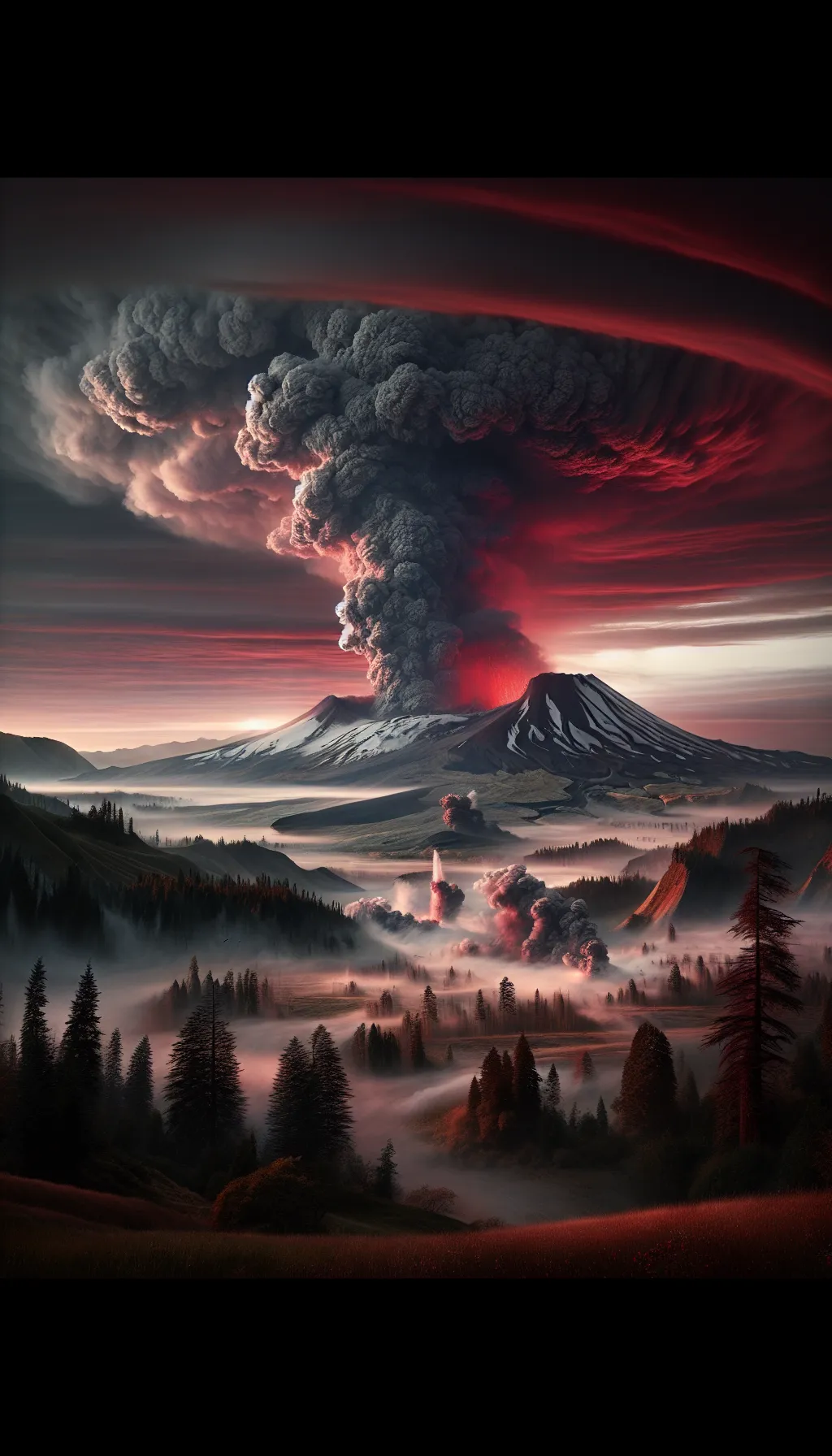United States – The Day the Mountain Roared – May 18, 1980
TLDR;
- Event: Mount St. Helens erupted on May 18, 1980, at 8:32 a.m., following weeks of seismic activity and a visible bulge on its north face.
- Impact: The eruption caused the largest volcanic landslide in recorded history, flattening 230 square miles (595 square kilometers) of forest and spreading ash across the U.S., with significant ashfall in the Pacific Northwest and Midwest.
- Casualties and Damage: The disaster claimed 57 lives and caused over a billion dollars in damage, leaving a crater 1.2 miles wide (1.9 kilometers) and 0.5 miles deep (0.8 kilometers).
- Legacy: The eruption serves as a reminder of nature’s power, with the area around Mount St. Helens gradually recovering but forever changed.
–
Story
The earth trembled beneath the feet of those who dared to venture near Mount St. Helens on that fateful morning of May 18, 1980. At precisely 8:32 a.m., the mountain unleashed its fury, sending a colossal plume of ash skyward and forever altering the landscape of Washington state.

For weeks, the volcano had been grumbling, its ominous rumblings a prelude to the cataclysm that was to come. Scientists and residents alike watched with a mix of awe and trepidation as the mountain’s north face bulged ominously, a clear sign of the pressure building within.
Then, following weeks of monitoring and warnings from the USGS, the north flank of Mount St. Helens collapsed in a massive volcanic landslide, the largest of its kind in recorded history. This triggered a violent lateral blast that flattened everything in its path, scorching 230 square miles of forest and sending a cloud of ash that spread across the U.S., with the darkest skies observed in the Pacific Northwest and ashfall reaching the Midwest as haze or fine dust.
The eruption claimed 57 lives, including those of scientists monitoring the eruption and individuals in restricted zones despite warnings, and caused over a billion dollars in damage, leaving a 1.2-mile-wide and 0.5-mile-deep crater where the summit once stood. It was a stark reminder of nature’s raw power and the fragility of human endeavors in the face of such force.
Today, Mount St. Helens stands as a testament to resilience and recovery, its slopes slowly healing, yet forever marked by the scars of that day.
–
| Would a different response from authorities have changed the outcome of the Mount St. Helens eruption? |